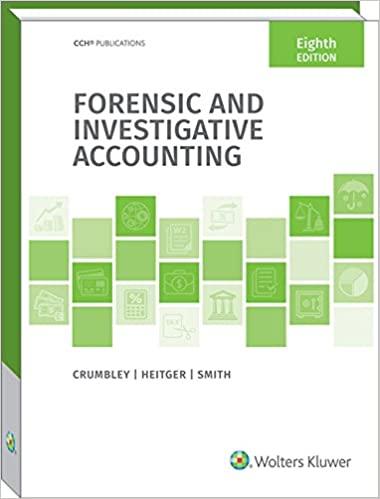Question
P4.1A (LO 1, 2, 3), AP Combat Fire, Inc. manufactures steel cylinders and nozzles for two models of fi re extinguishers: (1) a home fi
P4.1A (LO 1, 2, 3), AP Combat Fire, Inc. manufactures steel cylinders and nozzles for two models of fi re extinguishers: (1) a home fi re extinguisher and (2) a commercial fi re extinguisher. The home model is a high-volume (54,000 units), half-gallon cylinder that holds 2 1/2 pounds of multi-purpose dry chemical at 480 PSI. The commercial model is a low-volume (10,200 units), two-gallon cylinder that holds 10 pounds of multi-purpose dry chemical at 390 PSI. Both products require 1.5 hours of direct labor for completion. Therefore, total annual direct labor hours are 96,300 or [1.5 hours (54,000 + 10,200)]. Estimated annual manufacturing overhead is $1,584,280. Thus, the predetermined overhead rate is $16.45 or ($1,584,280 96,300) per direct labor hour. The direct materials cost per unit is $18.50 for the home model and $26.50 for the commercial model. The direct labor cost is $19 per unit for both the home and the commercial models. The companys managers identifi ed six activity cost pools and related cost drivers and accumulated overhead by cost pool as follows.
Estimated Estimated Use Use of of Drivers by Estimated Cost Product Activity Cost Pools Cost Drivers Overhead Drivers Home Commercial Receiving Pounds $ 80,400 335,000 215,000 120,000 Forming Machine hours 150,500 35,000 27,000 8,000 Assembling Number of parts 412,300 217,000 165,000 52,000 Testing Number of tests 51,000 25,500 15,500 10,000 Painting Gallons 52,580 5,258 3,680 1,578 Packing and shipping Pounds 837,500 335,000 215,000 120,000 $1,584,280
Instructions a. Under traditional product costing, compute the total unit cost of each product. Prepare a simple comparative schedule of the individual costs by product (similar to Illustration 4.3). b. Under ABC, prepare a schedule showing the computations of the activity-based overhead rates (per cost driver). c. Prepare a schedule assigning each activitys overhead cost pool to each product based on the use of cost drivers. (Include a computation of overhead cost per unit, rounding to the nearest cent.) d. Compute the total cost per unit for each product under ABC. e. Classify each of the activities as a value-added activity or a nonvalue-added activity. f. Comment on (1) the comparative overhead cost per unit for the two products under ABC, and (2) the comparative total costs per unit under traditional costing and ABC.
Step by Step Solution
There are 3 Steps involved in it
Step: 1

Get Instant Access to Expert-Tailored Solutions
See step-by-step solutions with expert insights and AI powered tools for academic success
Step: 2

Step: 3

Ace Your Homework with AI
Get the answers you need in no time with our AI-driven, step-by-step assistance
Get Started


